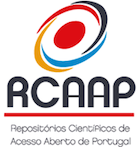Mixed methemoglobinemia, congenital and acquired
Keywords:
Methaemoglobinaemia, methylene blue, aniline, cytochrome-b reductaseAbstract
The authors present a case of acute methaemoglobinaemia of mixed aetiology - congenital and acquired. Excessive cutaneous absorption of aniline dye was the causal factor, but an associated moderate defect in cytochrome-b reductase as well as a glucose-6-phosphate dehydrogenase (G6PD) deficiency aggravated the clinicai course of the disease. Therapy with methylene blue was effective, but it caused haemolytic jaundice, probably because of the concomitant glucose-6-phosphate deficiency or because of the haemolytic action of the toxin and/ or possible hemolytic action of methylene blue.
A review of the erythrocyte enzymatic mechanisms that convert methaemoglobin to haemoglobin, clinicai symptoms, aetiology of acute methaemoglobinaemia, referring particularly to aniline as a toxic acquired cause, and to the deficiency of cytocrome-b_, reductase as the most frequent cause of congenital aetiology, is presented. The benefit of methylene blue therapy is considered as well as associated side-effects, particularly in the presence of concomitant G6PD deficiency.
The enzymatic study of relatives is very important for the prevention of similar episodes.
Downloads
References
Wright RO, Lewander WJ, Woolf AD. Methemoglobinemia: Etiology. Pharmacology, and Clinicai Management. Ann Emerg Med 1999: 34: 645-656.
Jaffé ER, Hultquist DE. Cytochrome-b5 reductase deficiency and enzymopenic hereditary methemoglobinemia. In: Scriver CR,
Beaudet AL, Valle D et ai, Ed. The Metabolic and Molecular Basis of lnherited Disease 8"' ed. Vol III McGraw Hill New York 2001: 4555-4570.
Curry S. Methemoglobinemia. Ann Emerg Med 1982: 11: 214-221.
Kornberg A et al. In Methods in Enzymology I. Academic Press New York 1955: 323.
Beutler E. In Red Cell Metabolism - A Manual of Biochemical Methods. Grune e Stratton 1971: 70-72.
Board PG. NADH - ferricyanide reductase. a convenient approach to lhe evaluation of NADPH - methaemoglobin reduclase in human erythrocytes. Clin Chim Acta 1981: 109: 233.
Harvey J, Keitt A. Studies of the efficacy and potential hazards of methylene blue therapy in aniline-induced methemoglobinemia. Br J Hematol 1983: 54: 29-41.
Hunter D. Health of the worker in the Twenty Century. In The Diseases of Occupations 6'" ed. Hodder and Stoughton. London 1978: 152.
Funk and Wagnalls. In Standard Dictionary of the English Language. Ed. Mackwardt A et al. 1969: 765.
Maladies causés par les dérivés nitres et aminés toxiques du benzene et de ses homologues - Aniline. In Le dépistage précoce des maladies professionelles. OMS. Geneve 1989: 142-146.
Thienes C, Haley T. Clinicai Toxicology. Lea and Febiger. Philadelphia 1979: 237-239.
Posthumus MD, Van Berkel W. Cytochrome-b5 reductase deficiency, an uncommon cause of cyanosis. Neth J Med 1994: 44: 136-140.
Cohen R, Sachs J, Wicked D et ai. Methemoglobinemia provoked by malarial chemoprophylaxis in Vietnam. New Engl J Med 1968: 279: 1127-1131.
Metz E, Balcerzak S, Sagon L. Mechanism of methylene blue stimulation of the hexose monophosphate shunt in the erythrocytc. J Clin lnvest 1976: 58: 797-802.
Beutler E, Baluda M. Methemoglobin reductase. Studies in the interaction between cell populations and of the role of methylene blue. Blood 1963: 22: 323-333
Nadler J, Green H. Rosenbaun A. lntravenous injection of methylcne blue in man with reference to its toxic symptoms and effect on the clectrocardiogram. Am J Med Sei 1934: 188: 15-21.
Additional Files
Published
How to Cite
Issue
Section
License

This work is licensed under a Creative Commons Attribution 4.0 International License.
Copyright (c) 2023 Medicina Interna





